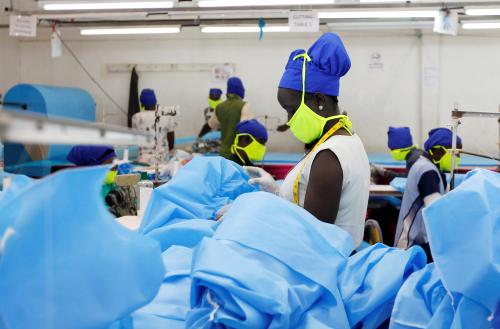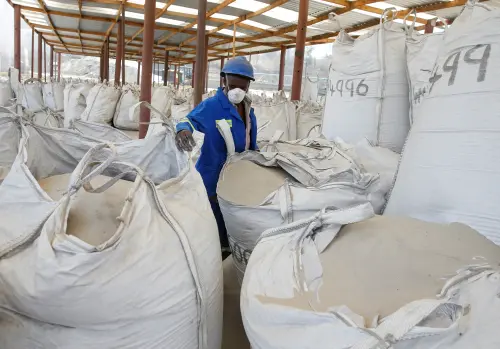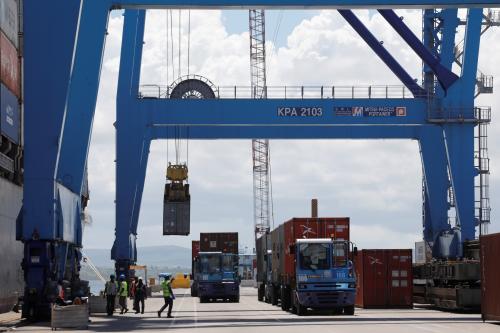While the recently announced postponement of trading under the African Continental Free Trade Area (AfCFTA) due to the COVID-19 pandemic will hinder the continent’s short-term progress toward regional integration, particularly trade integration, authorities look to continue the integration agenda.
Last week, the African Union Commission, the United Nations Economic Commission for Africa, and the African Development Bank released the second edition of the Africa Regional Integration Index Report. In order to assess African countries’ status and efforts toward the goal of improved regional integration, the report analyzes five dimensions of integration: the free movement of people, trade integration (including tariffs and shares of intra-regional trade), productive integration (including integration into regional value chains), macroeconomic integration (including investment treaties, currency convertibility, and regional inflation), and infrastructural integration (including flight and road infrastructure).
According to the report, with an average score of 0.327 out of a possible 1, African countries as a whole are not well integrated. The authors argue that this lag in integration will continue to be detrimental to the growth and development of the continent because regional integration holds tremendous promise for Africa to expand markets and trade, enhance cooperation, mitigate economic risk, and improve regional stability. Figure 1 breaks this score down by each of the five dimensions of regional integration and shows that African countries perform relatively better on the free movement of people, macroeconomic integration, and trade integration dimensions, and relatively worse on infrastructural integration and productive integration. The report states that the continent’s low score on productive integration is driven by weak regional networks of production, trade, and value chains. According to the report, the low score on infrastructural integration is exacerbated by poor planning, low levels of financing, and a lack of transparency during all stages of infrastructure projects.
Figure 1. Africa’s scores on the 5 dimensions of regional integration
 Note: Scores are calculated on a linear scale from 0 (not at all integrated) to 1 (fully integrated). A score of 0.5 is considered moderate or average.
Note: Scores are calculated on a linear scale from 0 (not at all integrated) to 1 (fully integrated). A score of 0.5 is considered moderate or average.
Source: Africa Regional Integration Index 2019.
The continent-wide scores belie some differences in integration levels between regional communities. In its analysis of Africa’s regional economic communities, for example, the report finds that the East African Community has the highest regional integration score of any African regional group, at 0.537. In contrast, the most weakly integrated economic community, the Southern African Development Community, has an overall score of only 0.337. Some regional communities also outperform on specific dimensions, despite overall low scores; for example, as Figure 2 shows, the Economic Community of West African States (ECOWAS) scores very highly on the free movement of people, but has a moderate overall score of 0.425, and particularly struggles with productive integration and infrastructural integration.
Figure 2. ECOWAS’ scores on the 5 dimensions of regional integration
 Note: The dotted lines represent Africa’s scores.
Note: The dotted lines represent Africa’s scores.
Source: Africa Regional Integration Index 2019.
The report argues that productive integration should be the continent’s first priority when improving regional integration because Africa’s very weak performance in this dimension hinders progress toward effective overall integration across the continent. In order to improve this dimension, the report recommends that more be done to build regional value chain frameworks, reduce non-tariff barriers, and improve Africa’s human capital by identifying skills gaps and developing cross-border skills development programs. The report also argues that the second priority for African countries should be infrastructural integration, as poor infrastructure is a major deterrent to trade, production, and investment.
For more on the promise of the AfCFTA for both regional integration and to mitigate the effects of crises like COVID-19, see “How the AfCFTA will improve access to ‘essential products’ and bolster Africa’s resilience to respond to future pandemics” by Landry Signé and Colette van der Ven and “The African Continental Free Trade Area and measures to facilitate trade could significantly mitigate COVID-19’s economic impact in Africa” by Nassim Oulmane, Mustapha Sadni Jallab, and Patrice Rélouendé Zidouemba. For more on East Africa’s demonstrated mettle in addressing recent trade and value chain disruptions, see “Trade in uncertain times: Prioritizing regional over global value chains to accelerate economic development in East Africa” by Andrew Mold and Anthony Mveyange.
The Brookings Institution is committed to quality, independence, and impact.
We are supported by a diverse array of funders. In line with our values and policies, each Brookings publication represents the sole views of its author(s).






Commentary
Figures of the week: Regional integration in Africa
May 27, 2020